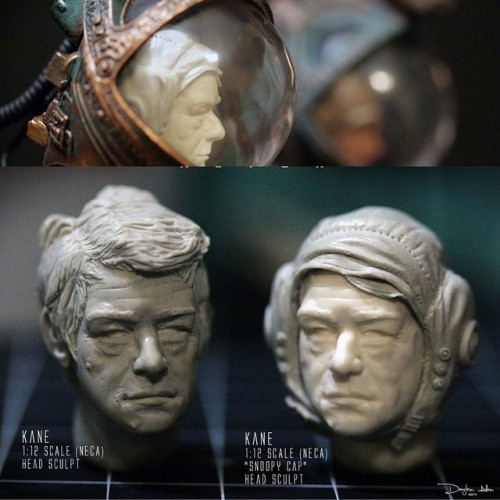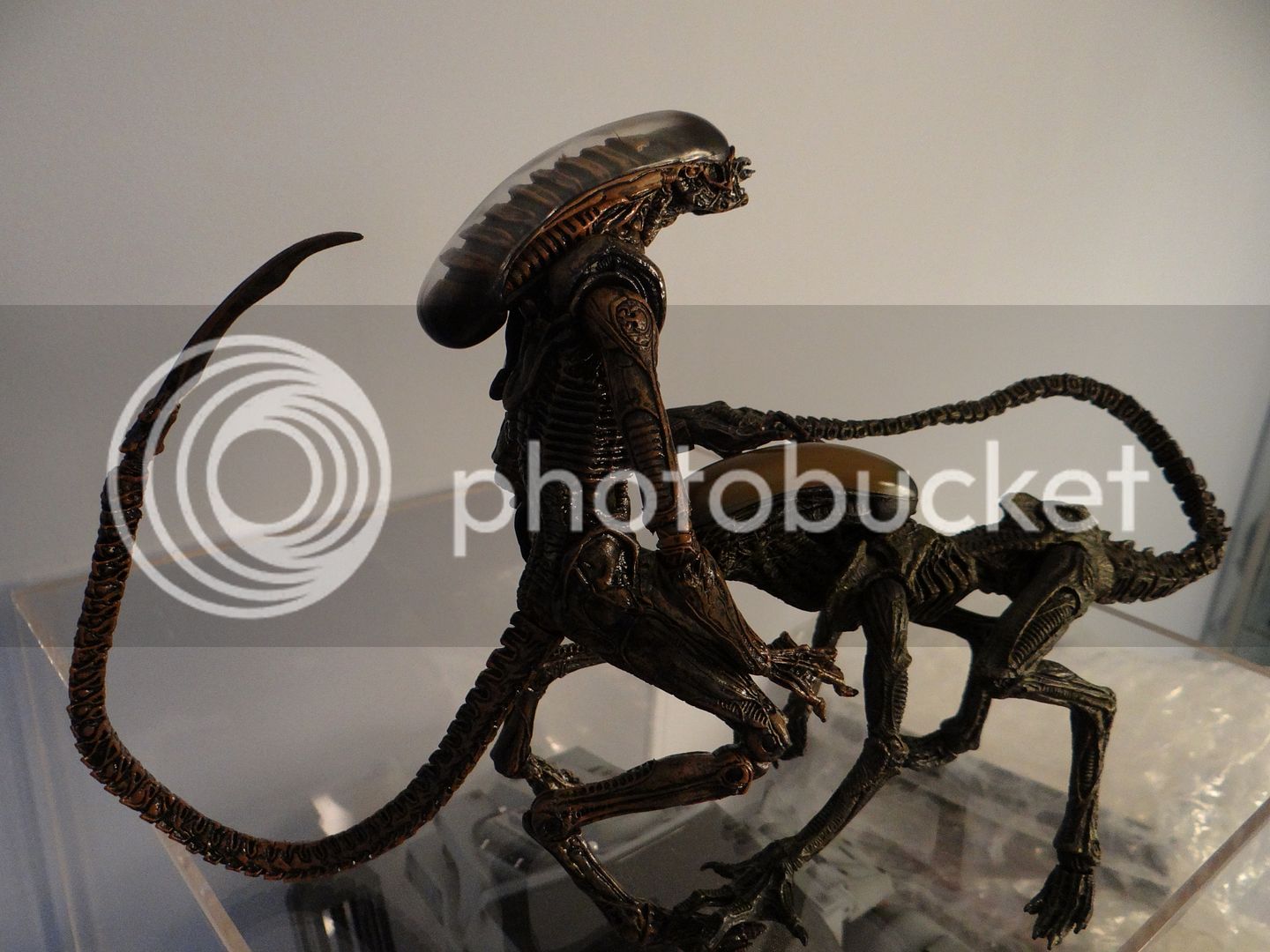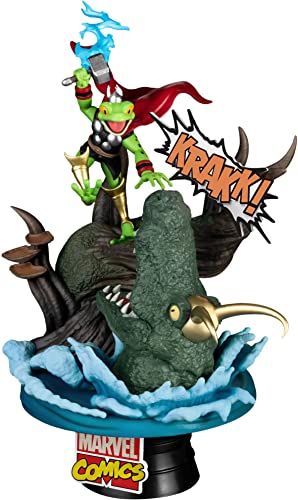since when, if it has same size as 1/12 figures?Neca is 1/10th scale
Sent from my SM-G870W using Tapatalk
You are using an out of date browser. It may not display this or other websites correctly.
You should upgrade or use an alternative browser.
You should upgrade or use an alternative browser.
Kotobukiya ARTFX+ ALIEN statues coming out!
- Thread starter Jace Madan
- Start date

Help Support Collector Freaks Forum:
This site may earn a commission from merchant affiliate
links, including eBay, Amazon, and others.
According to neca, the warrior stands 10 inches, koto big chap is 8,5 without base...I have some action figures from neca and they fon't seem as big as that. Same with the artfx alien big chap.there is a video in that post in which you can see the statue and it doesn't seem very small...
About the artfx warrior, if it's already out in japan why we don't have still a review on that?
About the artfx warrior, if it's already out in japan why we don't have still a review on that?
ts124
Super Freak
- Joined
- Apr 4, 2015
- Messages
- 312
- Reaction score
- 1
1/12 is figma and figuarts. And they are smaller than all of necas figures. Neca is 7" and figuarts/figma is 6"since when, if it has same size as 1/12 figures?
Sent from my SM-G870W using Tapatalk
1/12 is figma and figuarts. And they are smaller than all of necas figures. Neca is 7" and figuarts/figma is 6"
Sent from my SM-G870W using Tapatalk
Sorry but I am lost with the inches and the scales...if we convert it into cm, artfx big chap is 20 cm, and neca?
then why1/12 is figma and figuarts. And they are smaller than all of necas figures. Neca is 7" and figuarts/figma is 6"
Sent from my SM-G870W using Tapatalk
a) Neca figures are called 1/12

and b) have the same size as McFarlane which are called 1/12, too?

a major mistake?
here is a text that supports what you say about 7"=1/10, and in that case Kotobukiya will fit Neca if Neca is 7" and not 1/12.
The Scoop on Action Figure Size Scales
Updated December 16, 2014.
Action figures come in all shapes and sizes and although it's easy to break out a ruler and simply measure one of your action figures, that's not really going to help you to understand the scale references often used by toy companies and long-time collectors. Besides, it's way cooler to tell a fellow collector on an action figure forum that you picked up some nice 1:10 scale figures. It's all part of the lingo.
The term scale refers to the size ratio to a normal sized object. In this case, we're talking about smaller representations of the human figure. For standardization purposes, toy companies refer to the usual ideal human figure as being 6 feet tall (we're usually talking about heroic figures such as Batman or Darth Vader, hence the height). Therefore an action figure that is also 6 feet tall (which I have never seen) would have a 1:1 ratio. A 3 foot tall action figure (again, never seen one) would have a 1:2 ratio and so on.
Over the years, some standards scales have been used in the action figure world and we'll take a look at the most common, starting from largest to smallest.
CONTINUE READING BELOW OUR VIDEO
5 Places To Sell Your Crafts
0:00
1:4 Scale (aprox. 18")
This scale is one of the largest common scales for action figures and is technically reserved for dolls, if we're going by the doll/action figure definition, as they often have "real" hair or cloth clothing. Examples of this format can be found in Sideshow's Premium Format figures and the superhero dolls made by Tonner.
1:6 Scale (aprox. 12")
This scale holds a special place in action figure history as it was the original size of the very first figure to sport the "action figure" moniker, G.I. Joe. This was the reigning scale for action figures during the first decade or so after G.I. Joe hit the market, and many company's toyed with 12" figures of their own, including the 12" Star Wars dolls from Kenner in the late '70s and Mego's 12" line of superhero dolls, featuring Batman, Superman and a TV tie-in version of Wonder Woman.
1:9 Scale (aprox. 8")
This scale is pretty much exclusive to the Mego toy company's World's Greatest Heroes line of 8" action figures that ruled the toy aisles in the late '70s and early '80s. Other toy companies were quick to follow, such as Ideal with their famous monsters and Evel Knievel lines. This size became so popular, in fact, that G.I. Joe himself shrunk down to this size (although a petroleum shortage needed to make plastic didn't help, either).
1:10 Scale (aprox. 7")
For today's collectors, the 1:10 scale seems to be the king of the hill. Several action figure lines are being produced in this format from Mattel's DC Universe to Marvel's Lengends line. Mattel has made an even bigger splash with their Masters of the Universe Classics line that re-imagines the old school fantasy figures in a newer 7" scale. This size tends to be more popular with adult collectors than with children looking for play value.
1:18 Scale (aprox. 3.75" - 4")
Mego started it with their Pocket Heroes line in the late '70s, followed shortly thereafter by Fisher Price with their Adventure People line, but it would be Kenner's massively popular Star Wars collection that would set the unshakable standard for action figures of this scale for almost 20 years. Figures in this scale were less expensive, easier to fit into vehicles and loads of fun to collect. Toy lines such as G.I. Joe: A Real American Hero did extremely well in this size as did many movie figures, such as Indiana Jones and Tron and figures based on TV shows, like The Dukes of Hazzard and ChiPs.
Although 3.75" was the standard in this scale, a proper 1:18 scale figure should be 4", and a recent resurgence in popularity of this size has brought us several new figure lines from Marvel, DC Comics, G.I. Joe and Star Wars.
1:12 Scale (aprox. 5" - 6")
Chances are, if the figure was based on a movie made during the '90s (Last Action Hero, Congo, Jurassic Park, Super Mario Brothers) their action figures were this size. Throughout the 1990s, figures ranging between 5-6" took over the action figure world, pretty much killing the 3.75" figures and setting a new standard. Although not very popular today, figures in this scale will never be forgotten.
1:48 Scale (aprox. 2")
It should be noted that with the rise in popularity and collectability of figures such as Lego "minifigs" and other miniature, yet fully articulated, figures from other building sets such as Mega Bloks, the 2" tall figure is starting to hold its own and is beginning to command respect in the collectibles world. These figures may very well one day be the reigning scale standard in the not too distant future, so they get an honorable mention here.
Last edited:
then why
a) Neca figures are called 1/12
...
and b) have the same size as McFarlane which are called 1/12, too?
...
a major mistake?
I have never seen NECA nor McFarlane call themselves 1/12. The 3rd parties that do are doing so in error.

$33.27
Marvel 60th Anniversary Captain America DS-086 D-Stage Previews Exclusive Statue
Green Bargain

$67.50
Marvel Legends Series Venom, Marvel Comics Collectible Action Figure 6” - Exclusive
Package Outbound
then a major widespread mistake it is. like here:
The 15 Greatest McFarlane Action Figures of All Time
or even here, on a page with reviews my collecting grew on:
12 inch Paratrooper action figure - Another Toy Review by Michael Crawford, Captain Toy
since they've been so often called 1/12 and never 1/10, i thought they are. when Neca made their toys in the same scale, i thought the same.
nice, i don't even collect them for many years any more, and yet there is something to discover.
The 15 Greatest McFarlane Action Figures of All Time
McFarlane abandoned its traditional 6-inch, virtually-no-articulation style when they received the Halo license...
or even here, on a page with reviews my collecting grew on:
12 inch Paratrooper action figure - Another Toy Review by Michael Crawford, Captain Toy
the exact same figure released in 6" scale released in the larger 12" scale.
...
Where the uniform and its associated wrinkles were quite detailed in 1/12 scale, in 1/6th scale they are much broader and flat.
since they've been so often called 1/12 and never 1/10, i thought they are. when Neca made their toys in the same scale, i thought the same.
nice, i don't even collect them for many years any more, and yet there is something to discover.
abake
Rex Tremendae Majestatis
Well, you can always do the conversion and find out how close to either scale the figures are:
Online Scale Converter Tool - Scale Modelers World
I remember reading that the Giger alien was over 2 meters tall, let's say about 2.10... that would be 8.27 inches in 1/10 and 6.89 inches in 1/12.
So, if they are indeed close to 9 inches, I'd say the NECA aliens are actually 1/10 scale.
Online Scale Converter Tool - Scale Modelers World
I remember reading that the Giger alien was over 2 meters tall, let's say about 2.10... that would be 8.27 inches in 1/10 and 6.89 inches in 1/12.
So, if they are indeed close to 9 inches, I'd say the NECA aliens are actually 1/10 scale.
abake
Rex Tremendae Majestatis
Incidentally, a 1.80 meters man (about 5'11", the average used by most toy companies for adult men) would be 7.09 inches in 1/10 scale, hence the 7" scale description for most of these figures.
Jace Madan
Super Freak
- Joined
- Dec 31, 2008
- Messages
- 940
- Reaction score
- 0
I think that the Koto Big Chap might be a bit bigger than the NECA one. I'd imagine the 9" measurement for the neca figure is when it is standing straight up from foot to top of dome. The Koto figure is stated as being over 8 1/2" tall and is slightly bent at the knees and is bending at the waist a bit too.
If the Koto were to stand straight up, I have a feeling he'd be taller than the Neca one. So while they may be around the same height, the actual size of the Koto one might be bigger.
If the Koto were to stand straight up, I have a feeling he'd be taller than the Neca one. So while they may be around the same height, the actual size of the Koto one might be bigger.
i cannot, because i have no human figures from MF/NecaWell, you can always do the conversion and find out how close to either scale the figures are:
and monsters heights are always inaccurate, for example they both have predators lower than aliens while it should be the other way around.
Well, someone is bound to post a picture of them side by side.
Just looking at my KOTO human figures though, they appear larger than NECA's.
Whatever the size is, the Alien looks awesome.
My delema is how many versions of it to display in my collection. Hehe
Just looking at my KOTO human figures though, they appear larger than NECA's.
Whatever the size is, the Alien looks awesome.
My delema is how many versions of it to display in my collection. Hehe
Python
Super Freak
Yeah, that looks bad to me tbh, I hope the big chap is much better produced.
They quite obviously relied on drybrushing with this. Not that I'm necessarily surprised; using an airbrush or taking more time to fade the colors on all those ridges in such a small scale is too much to ask.
Then again, it's about the size of a NECA, looks like a NECA, yet costs four times as much. Easy pass on this once promising line.
Then again, it's about the size of a NECA, looks like a NECA, yet costs four times as much. Easy pass on this once promising line.
Similar threads
- Replies
- 3
- Views
- 1K
- Replies
- 35
- Views
- 7K
- Replies
- 0
- Views
- 280
- Replies
- 10
- Views
- 3K
- Replies
- 1
- Views
- 2K













